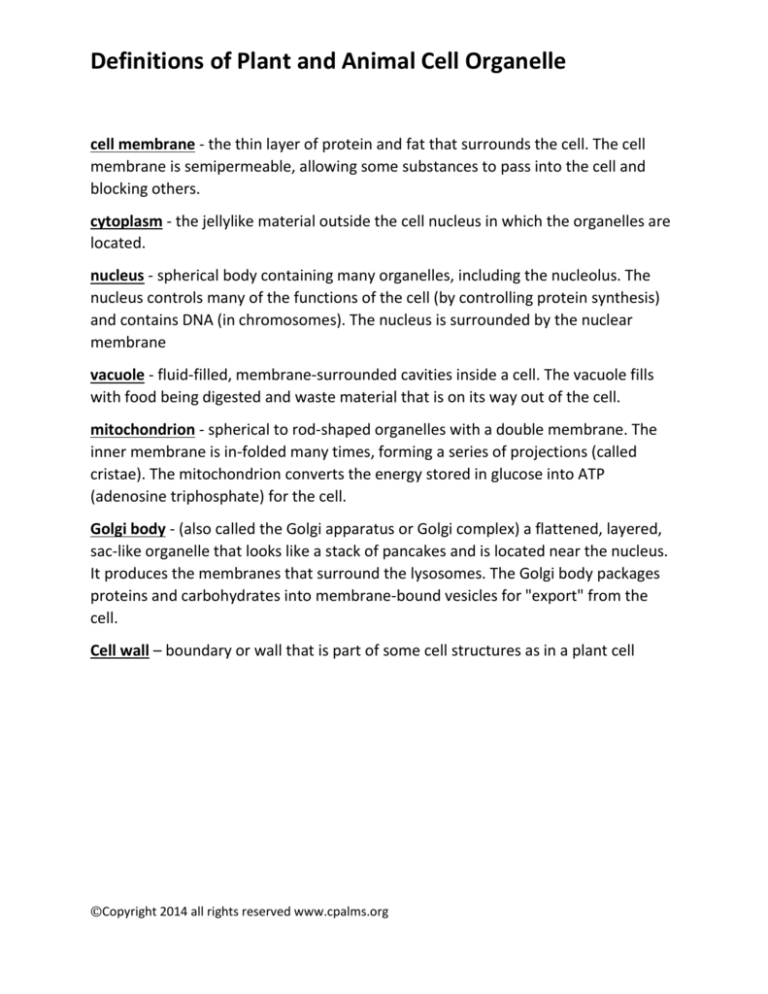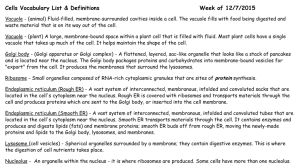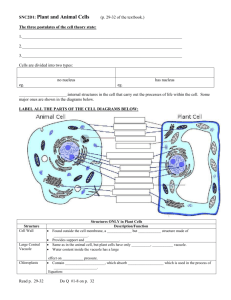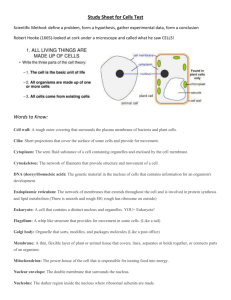
Definitions of Plant and Animal Cell Organelle
cell membrane - the thin layer of protein and fat that surrounds the cell. The cell
membrane is semipermeable, allowing some substances to pass into the cell and
blocking others.
cytoplasm - the jellylike material outside the cell nucleus in which the organelles are
located.
nucleus - spherical body containing many organelles, including the nucleolus. The
nucleus controls many of the functions of the cell (by controlling protein synthesis)
and contains DNA (in chromosomes). The nucleus is surrounded by the nuclear
membrane
vacuole - fluid-filled, membrane-surrounded cavities inside a cell. The vacuole fills
with food being digested and waste material that is on its way out of the cell.
mitochondrion - spherical to rod-shaped organelles with a double membrane. The
inner membrane is in-folded many times, forming a series of projections (called
cristae). The mitochondrion converts the energy stored in glucose into ATP
(adenosine triphosphate) for the cell.
Golgi body - (also called the Golgi apparatus or Golgi complex) a flattened, layered,
sac-like organelle that looks like a stack of pancakes and is located near the nucleus.
It produces the membranes that surround the lysosomes. The Golgi body packages
proteins and carbohydrates into membrane-bound vesicles for "export" from the
cell.
Cell wall – boundary or wall that is part of some cell structures as in a plant cell
©Copyright 2014 all rights reserved www.cpalms.org












